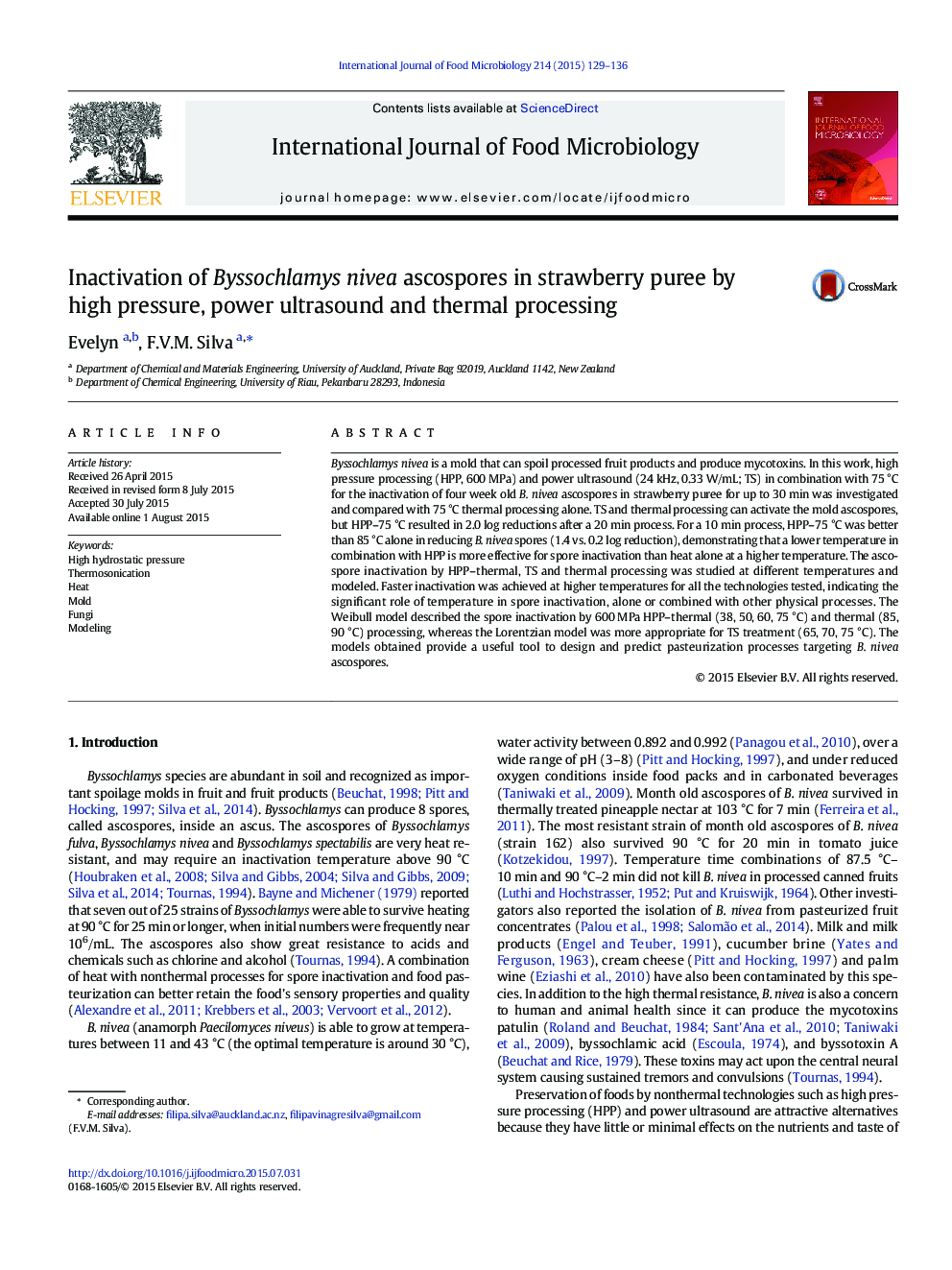| کد مقاله | کد نشریه | سال انتشار | مقاله انگلیسی | نسخه تمام متن |
|---|---|---|---|---|
| 4366468 | 1616569 | 2015 | 8 صفحه PDF | دانلود رایگان |

• HPP–thermal was the best method for Byssochlamys nivea spore inactivation in strawberry puree.
• Higher HPP/TS/thermal temperature caused higher mold ascospore inactivation.
• The Weibull model was appropriate for HPP–thermal and thermal inactivation of mold spore.
• The Lorentzian equation modeled the TS inactivation of B. nivea ascospores in strawberry puree.
Byssochlamys nivea is a mold that can spoil processed fruit products and produce mycotoxins. In this work, high pressure processing (HPP, 600 MPa) and power ultrasound (24 kHz, 0.33 W/mL; TS) in combination with 75 °C for the inactivation of four week old B. nivea ascospores in strawberry puree for up to 30 min was investigated and compared with 75 °C thermal processing alone. TS and thermal processing can activate the mold ascospores, but HPP–75 °C resulted in 2.0 log reductions after a 20 min process. For a 10 min process, HPP–75 °C was better than 85 °C alone in reducing B. nivea spores (1.4 vs. 0.2 log reduction), demonstrating that a lower temperature in combination with HPP is more effective for spore inactivation than heat alone at a higher temperature. The ascospore inactivation by HPP–thermal, TS and thermal processing was studied at different temperatures and modeled. Faster inactivation was achieved at higher temperatures for all the technologies tested, indicating the significant role of temperature in spore inactivation, alone or combined with other physical processes. The Weibull model described the spore inactivation by 600 MPa HPP–thermal (38, 50, 60, 75 °C) and thermal (85, 90 °C) processing, whereas the Lorentzian model was more appropriate for TS treatment (65, 70, 75 °C). The models obtained provide a useful tool to design and predict pasteurization processes targeting B. nivea ascospores.
Journal: International Journal of Food Microbiology - Volume 214, 2 December 2015, Pages 129–136